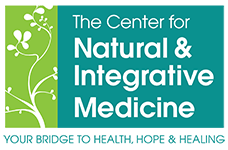The New Year of 2013 is well begun, and the days of January are flying by very quickly. Therefore, we want to remind you that we have reserved a warm welcome for you at our very special seminar Tuesday, January 22, 2013, 6:00-7:00 PM at The Center for Natural & Integrative Medicine.
As we have mentioned in previous blogs, the title of the seminar will be “Restoring your Body’s Balance.” Our program will include fascinating information about:
Nutritional Balance, with Kiara Oberhaensli: Is it naturally true that we really are what we eat?
Hormonal Balance, with Dr. Moraczewski: Is hormaonal balance about more than “Men are from Mars and Women are from Venus?”
Supplement Balance, with Stephanie Kuzicki, acupuncturist: “How do we learn what supplements are right for us?”
 Our blog topic for January concerns an ancient medical science that is as modern as today’s technology: Acupuncture.
Our blog topic for January concerns an ancient medical science that is as modern as today’s technology: Acupuncture.
Four Keys To Understanding Acupuncture
1. The History: Acupuncture has been practiced in China and other Asian countries not just for centuries, but for thousands of years. “Acupuncture is one of the key components of traditional Chinese medicine. Acupuncture became better known in the United States in 1971, when New York Times reporter James Reston wrote about how doctors in China used needles to ease his pain after surgery.”
2. The Procedure: Acupuncture is the stimulation of special, anatomical points on the body using many techniques, like needles, pressure, and even electricity. Most people know that the major acupuncture technique is the penetration of a patient’s skin with thin, metallic, medical needles. The U.S. Food and Drug Administration (FDA) Regulations require:
• They are to be used by licensed practitioners.
• They are manufactured to rigorous stands.
• They must be sterile, nontoxic, and labeled for single use.
It must also be noted that they do not hurt nearly as much as a flu shot, and patients report that the pain relief far outweighs the minor tiny pinch or discomfort of the stimulation. Some patients report that they barely feel the needles.
3. The Purposes: Modern science has only begun to investigate the many uses of acupuncture. Primary, of course, is its use to alleviate pain. Patients have reported major relief in such conditions as low-back pain, menstrual cramps, myofascial pain, and neck pain. Patient reports as well as massive studies have proven the relief brought by acupuncture to those who suffer with osteoarthritis/knee pain, postoperative dental pain, tennis elbow.
 Ongoing research has shown remarkable results with cancer patients in tolerating both pain and the nausea caused by chemotherapy treatments. “The U.S. National Institutes of Health (NIH) and the World Health Organization (WHO) have declared acupuncture effective for more than 200 other conditions including, respiratory, eye and mouth, gastro-intestinal, neurological and muscular disorders.” The healing power of acupuncture has become so prevalant and popular internationally that acupuncturists were available to the atheletes at this year’s Olympics.
Ongoing research has shown remarkable results with cancer patients in tolerating both pain and the nausea caused by chemotherapy treatments. “The U.S. National Institutes of Health (NIH) and the World Health Organization (WHO) have declared acupuncture effective for more than 200 other conditions including, respiratory, eye and mouth, gastro-intestinal, neurological and muscular disorders.” The healing power of acupuncture has become so prevalant and popular internationally that acupuncturists were available to the atheletes at this year’s Olympics.
4. The Cautions: Unlike many drugs, there are few if any side effects associated with this treatment. The Center does give you two important cautions: First, always be sure your physicians know about your acupuncture or any other natural or alternative therapies you select.
Secondly, we urge you to be certain you trust only a licensed, experienced practitioner, such as our own Stephanie Kuzciki who is an acupuncture physician.
If you suffer from acute or chronic pain, and you are in search of an alternative to drugs, acupuncture is the natural way to stop pain, and promote well being in the body. It is one of several natural therapies offed by Dr. Kirti Kalidas and his staff at the The Center for Natural & Integrative Medicine.
Acupuncture could be your stepping stone on a bridge from pain to well-being or from imbalance to balance. As Dr. Kalidas states, “By treating the whole person, these programs optimize immune functions decreasing illness and enhancing the positive outcome for health and well being. My functional approach truly provides, “A bridge to health, hope, and healing.”

